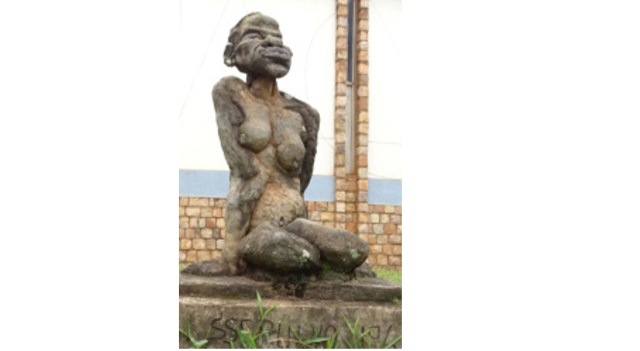
The master of anatomy and individual proficiency lives on
Kampala, Uganda | DOMINIC MUWANGUZI | The sculpture in stained glass depicts rural scenery. A herdsman stands; leaning on a stick, while another man; squatting, milks a cow with birds hovering nearby. The sculpture is considered a masterpiece and is admired for showing the studio dexterity of the artist in exploring concepts of form and proportionality of the human figures.
The artist is Ignatius Serulyo; a former student and lecturer at the Margret Trowel School of Industrial and Fine Art at Makere University Kampala where the sculpture stands in the façade of the sculpture studio.
Serulyo died in 2018, years after he left the school, but his name still reverberates across the walls and spaces and in the minds of the art community at this most prestigious institute in the East and Central Africa region.
A few metres away from the sculpture studio, is the art gallery; and sitting within the gardens of the art space, on the left as one enters the gallery, is a somewhat disfigured human figure with sagging breasts seated on a dais. Titled ` Old Woman 1963’, it is another Serulyo piece. This one interrogates the subject of anatomy; proficiently executed under the theme of old age.
In this sculpture, the artist vividly captures the physical problems that can affect an older person. The artist skillfully shows that the physical decline in old age in not inability. In fact, the old woman exudes dignity and pride. The `Old Woman’ explicitly argues the complexity of old age and beauty. At the same venue is `Frog (undated)’ that was built in stone and also illustrates the artist’s skilled approach and obsession with anatomy.
Serulyo had passion for texture and modeling of colours that spilled into his sculptures. His series of paintings on the ceiling of St. Francis Chapel, Makerere University and a large artwork that resides within Mary Stuart Hall bear the same hallmarks. His lush palette evokes a rustic energy and vibrancy.
He grew up in the rural south eastern district of Masaka; a place of verdant savannah vegetation which, in his work, became symbolic of the vitality of the African people and their hospitable nature.
He composed a mural painting at the sculpture studio as a response to the vitality of the immediate post-independence years. He was part of a movement of artists on the continent eager to decolonise art with the inclusion of indigenous lifestyles and forms.
They sought to detach themselves from western modernist art. To be skilled and technically competent was not enough; each sought a degree of individuality in their work. He eagerly integrated indigenous lifestyles within his practice creating a constellation of cultures in one artwork.
Dr. George Kyeyune, art historian and sculptor, says through Serulyo’s work one sees that “as much as he was formally trained, his tutors Cecil Todd and Jonathan Kingdon were liberal enough to allow him to explore himself through the art”.
Kyeyune says “it is not enough as an artist to be skilled technically, but individual proficiency is key in establishing a unique artist because after all, art is not just about being able to draw someone, but it should ask questions and be relevant to the public”.
While the artist may have passed on, his outstanding approach to art making continues to inspire many artists including Dr. George Kyeyune and Dr. Kizito Maria Kasule both of Makerere University where the deceased artist taught for thirty years. They say Serulyo’s “individual proficiency” observed through his work makes him stand out of the crowd.
Ignatius Serulyo passed on December 2018 and remains one of the most important artists of his time. His work is collected by private collectors in Uganda, but mostly in Germany.
****
 The Independent Uganda: You get the Truth we Pay the Price
The Independent Uganda: You get the Truth we Pay the Price


